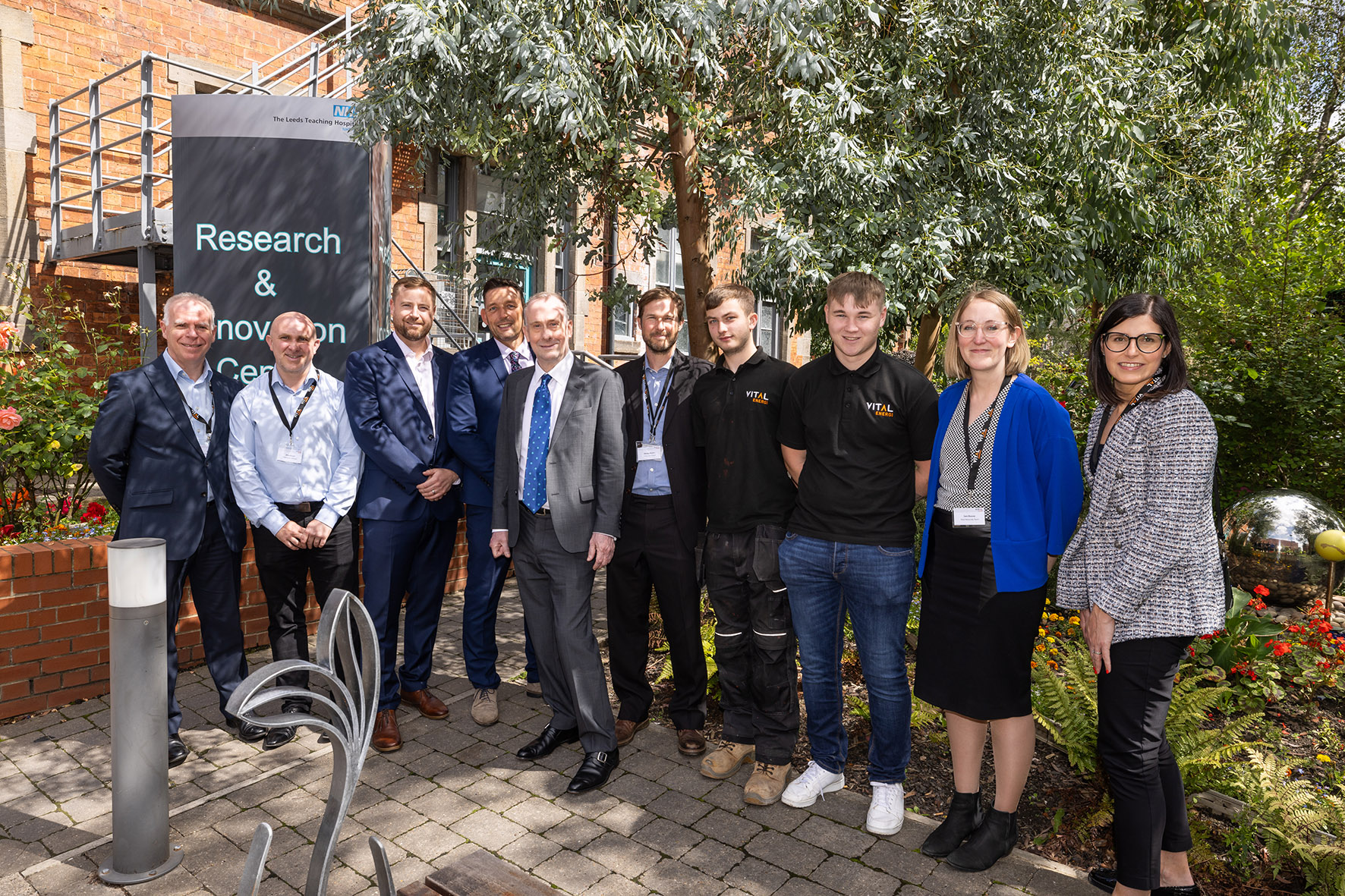Minister Visits £62m Leeds PIPES Heat Network Project

Leeds City Council and Vital Energi were delighted to welcome Lord Callanan, the Parliamentary Under Secretary of State (Minister for Energy Efficiency and Green Finance), to the award-winning Leeds PIPES heat network on Thursday (3rd August) to learn more about how it has transformed the city’s carbon emissions and plans for its expansion.
The Minister visited several landmarks and connections on the network including the Recycling & Energy Recovery Facility (RERF), Cross Green energy centre and St James’s Hospital where he met members from the NHS Estates and Facilities team. Lord Callanan also visited Shakespeare Towers to meet residents connected to the Heat Network.
“The Leeds PIPES heat network is providing low-cost heating to local communities and it’s fantastic to hear this project, backed by government funding, will be extended to allow even more people to benefit. “What I witnessed in Leeds is part of the future of low-carbon heating in this country, reducing emissions while supporting the nation’s push for greater energy security and independence. That is why we are investing millions of pounds in building new, greener heat networks and upgrading old inefficient systems.”
Lord Callanan, Minister for Energy Efficiency and Green Finance
By using heat recovered from non-recyclable waste at the Recycling and Energy Recovery Facility (RERF) and distributing it throughout the city via a 26.5km district heating network, the Leeds PIPES project is helping just under 2,000 homes, businesses, and 12 non-residential buildings, including the Town Hall, Leeds Playhouse and Museum. The network has enabled these buildings to move away from costly heating systems, providing them with affordable, reliable, and low-carbon heat and hot water.
Last year, the network of insulated underground pipes supplied 22,029 megawatt-hours of heating in total and helped reduce the city’s carbon footprint by 3,975 tonnes.
It was a great opportunity for us to show Lord Callanan around the network, but the buildings and energy centres are only part of the story. By meeting some of the residents and non-domestic connections, the positive impact of this project becomes evident. We believe it is a scheme which sets the standards for what major cities can achieve and look forward to working with Leeds City Council on the continued expansion.”
Mike Cooke, Vital Energi’s Managing Director
Work is currently underway at St James’s University Hospital, the latest major connection to the network.
Craige Richardson, Executive Director of Estates and Facilities at Leeds Teaching Hospitals, said: “We were delighted to show Lord Callanan the changes we are making to the Trust estate to ensure we meet the NHS 2040 net zero target. We recognise that if we are to provide the best possible care to our patients and improve their quality of life, we need to reduce our environmental impact. Decarbonising our estate is a key priority for the Trust and the connection to Leeds PIPES is taking us closer to achieving this”.
New plans for two major extensions to the award-winning network—which would enable dozens more buildings to connect—have also been published by the local authority and discussed by senior members in recent weeks.
The four latest buildings, including the first private-sector residential developers, which have confirmed their intention to connect to the network within the next 12 months are:
- Spinner’s Yard around Mabgate, developed by Rise Homes
- Leonardo and Thoresby buildings on Gt George Street, developed by McLaren on behalf of Arrow Leonardo
- The redevelopment of Leeds Technology Campus on Cookridge Street, developed by Metropolitan & District Securities
- Leeds Conservatoire on Quarry Hill
Separately, senior councillors have recently approved an application for up to £20 million of grant funding that, if successful, would enable two major new extensions to the existing network.
The first new extension would see another 600m (0.4 miles) of pipes laid from Little Queen Street to Wellington Street. A second new extension, located in the South Bank of the city centre, would see approximately 7 km (4.3 miles) of low carbon heat network being installed from Clarence Road to Sweet Street and eventually connecting to the existing Leeds PIPES infrastructure. Subject to funding and final approval, construction of the extensions could begin as soon as 2024 with works completing in 2026.
Work to develop the detailed project plans and business cases required to secure funding for and construct the new extensions is currently underway, after the council successfully secured £154,000 of grant funding from the government’s Heat Network Development Unit earlier this year.
Executive Member for Climate, Energy, Environment & Green Space said: “Year after year, the Leeds PIPES district heating network continues to gain momentum. I am delighted that five more buildings—including the first private residential developers—have now signed up for the benefits of affordable, reliable, and low carbon heating. “By planning to bring the network to completely different parts of the city, we’ll soon be able to give many more businesses and residents a new opportunity to move away from costly fossil-fuels and towards a greener future with Leeds PIPES heating.”
Councillor Mohammed Rafique.
Buildings and developments located near the underground pipe infrastructure can choose to connect at any time and the council is currently in discussions with around 40 potential customers. A new website for the Leeds PIPES project was recently launched to help raise awareness of the many different benefits for residents, developers, and building managers
